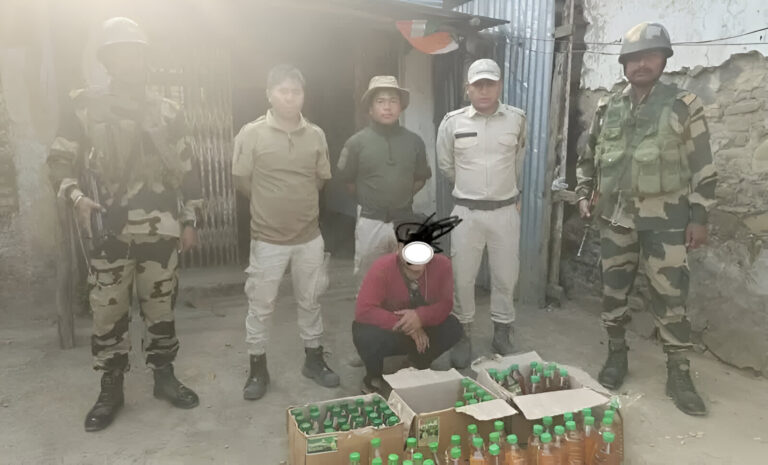Tragic Incident in Thoubal: 10-Month-Old Baby Chokes on Live Fish
Introduction
Accidents happen in the blink of an eye, and often they leave behind a trail of grief and regret. The tragic choking incident of a 10-month-old baby in Thoubal, Manipur, is a painful reminder of how quickly life can change. One moment, a curious child explores the world, and the next, they are fighting for breath. This article will delve deep into the circumstances surrounding this incident, the dangers of choking, and how we can better protect our little ones.
The Incident: What Happened?
On October 17, 2024, the life of a young family in Thoubal was turned upside down when their 10-month-old baby boy tried to swallow a live fish during a brief distraction. While the mother was engaged in a phone call, the curious toddler, likely drawn by the movement of the fish, attempted to swallow it whole. Unfortunately, this resulted in the fish lodging in his throat, causing him to choke.
The mother’s frantic attempts to remove the fish were in vain. As the baby gasped and cried, she quickly rushed him to Thoubal district hospital. Unfortunately, the situation took a devastating turn when, upon transfer to RIMS hospital in Imphal, doctors confirmed that he had died from breathing difficulties. The tragedy unfolded in mere minutes, illustrating how quickly accidents can escalate.
The Fish in Question: Ngapemma
The fish involved in this tragic incident is locally known as Ngapemma (Trichogaster fasciata), a species commonly found in the region. Known for their vibrant colors and lively movement, they can attract the attention of curious infants and toddlers. This incident raises questions about the availability of live fish as a source of play or food for young children.
Why Are Toddlers at Risk?
Children, especially toddlers, are naturally curious and often unaware of the dangers around them. Their exploratory nature can lead them to put objects in their mouths without understanding the potential risks. This incident serves as a tragic example of how everyday items can pose serious choking hazards.
Common Choking Hazards for Young Children
- Food Items: Certain foods, especially those that are round, hard, or sticky, like grapes, peanuts, and hot dogs, can easily block a child’s airway.
- Small Objects: Toys with small parts, coins, and other items that fit entirely in a child’s mouth can pose significant choking risks.
- Live Animals or Fish: As seen in this incident, live animals can present unexpected dangers when children attempt to interact with them.
Choking: Signs and Symptoms
Understanding the signs of choking is crucial for every caregiver. Here are some common symptoms to watch for:
- Inability to cough or make sounds
- Gasping or struggling for breath
- Turning blue or pale, particularly around the lips and face
- Grasping the throat or neck, which indicates distress
Immediate Steps to Take if a Child is Choking
In the event of a choking incident, every second counts. Here’s a quick guide to follow:
- Assess the Situation: Is the child still able to breathe or cough?
- Encourage Coughing: If the child can still breathe, encourage them to cough.
- Perform Back Blows: For infants, use five gentle blows between the shoulder blades.
- Use Abdominal Thrusts: For older children, if the back blows don’t work, stand behind them and perform abdominal thrusts.
- Call for Help: If the situation does not improve quickly, seek emergency assistance immediately.
The Importance of Supervision
This tragic incident underscores the critical need for constant supervision of young children, especially in environments where potential choking hazards exist. Caregivers must remain vigilant, as distractions—such as phone calls—can occur suddenly and lead to life-threatening situations.
Preventative Measures: Keeping Kids Safe
Here are some effective strategies to minimize choking risks for toddlers:
- Food Preparation: Always cut food into small, manageable pieces, and avoid high-risk foods for young children.
- Toy Safety: Regularly check toys for small parts and avoid toys that are too small for toddlers.
- Educational Awareness: Educate caregivers and family members about choking hazards and emergency response techniques.
The Role of Community and Support
In light of this tragedy, it’s essential for communities to rally around grieving families and promote awareness about child safety. Educational workshops, community events, and outreach programs can help spread vital information and prevent future incidents.
Conclusion: A Call for Awareness and Action
The tragic choking of a 10-month-old baby in Thoubal is a heart-wrenching reminder of how fragile life can be. It urges us to reflect on the safety measures we have in place and the constant vigilance required when caring for young children. While we cannot change the past, we can certainly work towards a safer future, ensuring that our little ones are protected from the dangers that lurk in everyday life.
FAQs
- What should I do if my child starts choking?
- Remain calm, encourage coughing if possible, and perform back blows or abdominal thrusts as needed. Call for emergency help if the situation does not resolve quickly.
- What foods are considered choking hazards for toddlers?
- Foods that are round, hard, or sticky, such as grapes, nuts, hot dogs, and popcorn, can be significant choking hazards for young children.
- How can I prevent choking at home?
- Supervise children during meals, cut food into small pieces, and keep small objects out of reach. Educate caregivers about choking risks.
- What are the signs that a child is choking?
- Signs include difficulty breathing, gasping, crying, inability to cough, or turning blue. If a child shows these symptoms, immediate action is necessary.
- Are there choking hazard regulations for toys?
- Yes, there are safety regulations that govern the size and design of toys for children to reduce choking risks. Always check toy labels and safety ratings.



Show me the picture of Fish